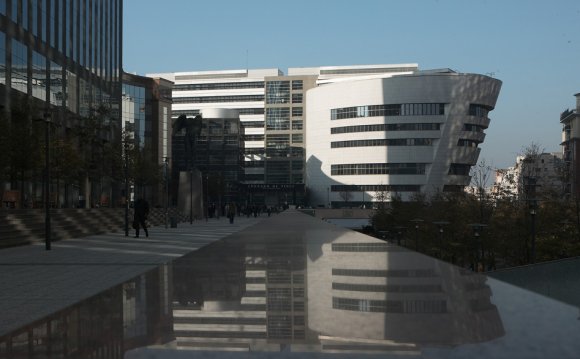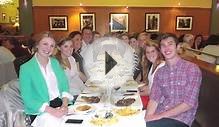
The historic University of Paris (French: Université de Paris) first appeared in the second half of the 12th century, but was reorganised in 1970 as 13 autonomous universities after the student protests of the French May. Following months of conflict between students and authorities at the University of Paris at Nanterre, the administration shut down that university on May 2, 1968. Students of the Sorbonne protested the closure and the threatened expulsion of several students at Nanterre on May 3, 1968. More than 20, 000 students, teachers and supporters marched towards the Sorbonne, still sealed off by the police, who charged, wielding their batons, as soon as the marchers approached. While the crowd dispersed, some began to create barricades out of whatever was at hand, while others threw paving stones, forcing the police to retreat for a time. The police then responded with tear gas and charged the crowd again. Hundreds more students were arrested.
Negotiations broke down and students returned to their campuses after a false report that the government had agreed to reopen them, only to discover the police still occupying the schools. The students now had a near revolutionary fervor. Another protest was organized on the Rive Gauche by students on May 10. When the riot police again blocked them from crossing the river, the crowd again threw up barricades, which the police then attacked at 2:15 in the morning after negotiations once again foundered. The confrontation, which produced hundreds of arrests and injuries, lasted until dawn of the following day.
Well over a million people marched through Paris on Monday, May 13; the police stayed largely out of sight. Prime Minister Georges Pompidou personally announced the release of the prisoners and the reopening of the Sorbonne. However, the surge of strikes did not recede. Instead, the protesters got even more active.
When the Sorbonne reopened, students occupied it and declared it an autonomous "people's university." Approximately 401 popular action committees were set up in Paris, including the Occupation Committee of the Sorbonne, and elsewhere in the weeks that followed to take up grievances against the government and French society.
After the tumultuous events of May 1968, the French Fifth Republic proposed various drastic reforms of the French university system. In 1971, the five ancient faculties of the former University of Paris were split and then re-formed into thirteen interdisciplinary universities by the Faure Law.
Four of these new universities now share the premises of the historic Sorbonne building, which, until that time, had been mainly reserved for the Faculties of Arts and Human Sciences. These four universities were also given other premises in different locations throughout Paris.
Three universities have kept the Sorbonne name as part of their official title: the inheritors of the Arts and Humanities departments, the University de La Sorbonne Nouvelle (Paris III) and the University Paris-Sorbonne (Paris IV). The University of Paris 1 Pantheon-Sorbonne also wanted to keep Sorbonne for the international recognition. The Sorbonne premises also house part of the Paris Descartes University (inheritor of the Medicine department) and the Chancellery, the educational authority of Paris.
Overview[edit]
La Sorbonne Nouvelle —as well as Pantheon-Sorbonne and Paris-Sorbonne (Paris I and IV respectively) - is often referred to as the Sorbonne or La Sorbonne after the theological college (Collège de Sorbonne) founded in 1257 by Robert de Sorbon of the historic University of Paris.
La Sorbonne (Paris III) offers courses in a wide range of Arts and Humanities subjects, areas on which - according to the 2012 QS World University Rankings- the university is among the best 150 in the world.
University sites[edit]
The Sorbonne Nouvelle has sites at various locations in Paris. The main university centres are:
Central Sorbonne Building - central administration offices, Literature.
Central Sorbonne BuildingCensier - the main teaching site, named after the adjacent street
Bièvre - houses teaching and research facilities for language study and the main staff and student refectories
Rue Saint Jacques - French as a Foreign Language
Rue des Bernardins - Linguistics and Phonetics
Rue de l' Ecole de Médecine - English Studies
Entrance of the main building of the "new" Sorbonne university, built in by Henri-Paul Nénot, rue des Écoles, Paris. Entrance of one of the buildings of University Sorbonne Nouvelle - Paris III, 5 rue de l'Ecole de Médecine, Paris. Formerly buildings for the royal school of drawing under Louis XV Entrance of the university Sorbonne Nouvelle, Campus CensierRue Saint Guillaume - Latin American Studies
Place du Maréchal-de-Lattre-de-Tassigny - Houses the E.S.I.T (School of Interpreting and Translation)
RELATED VIDEO












